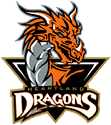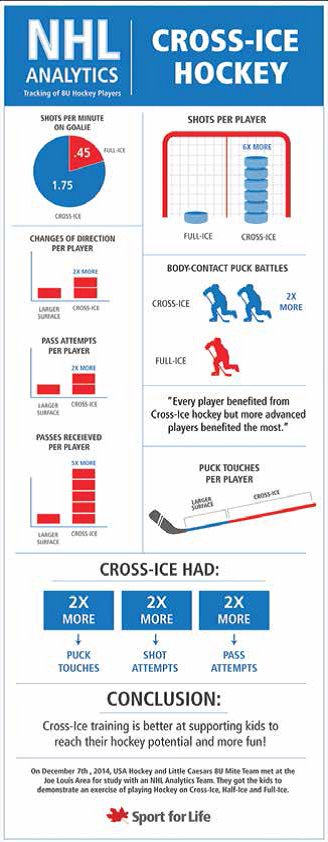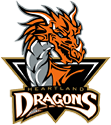Welcome to the Heartland Jr. Dragons initiation Program!!
Please take the time to read the information provided below to familiarize yourself with some of the key element of our program. If you have any questions please contact us at 905-291-1940.
BACK BY POPULAR DEMAND: KYLA SCOVILLE to deliver the Heartland Jr. Dragons initiation Program!
Heartland Dragons Minor Hockey is very excited to announce a new partnership with the incredibly respected KYLA SCOVILLE. Beginning in September KYLA SCOVILLE will be delivering our Pre-Tyke program for 4 – 6 year old players of all skill levels. Heartland Dragons Minor Hockey Association views this partnership as a great opportunity to significantly strengthen our growing program offering and maximize the experience and benefits that a TOP TIER PROGRAM can provide to all players beginning their hockey journey!
KYLA SCOVILLE brings a wealth of experience to our GROWING program. Kyla’s experience is expansive: running the city Skating Program, training sessions for OHL players, worked with AA and AAA clubs on both skating and skills development. Kyla has 25 years of on ice experience in figure skating, power skating, and hockey skills development in partnership with minor hockey associations, with a great group of instructors specialized in working with youth from the age of 4 up. Instructors will be directing and working alongside parents/volunteers to deliver the best Pre-Tyke program in Mississauga!
Feel free to call if you have any questions regarding our new program. Also please contact us for details on our unique, limited time incentive program for 4-6 year old players new to Heartland.

Heartland Jr. Dragons Initiation Program (4 – 6 year olds)
This is a hockey program for four, five and six-year-olds. In a fun, non-competitive environment, the players learn hockey skills and fair play, with an emphasis on the development of self-esteem and self-confidence. We believe if the introduction to hockey is a positive one, the players will develop a lifetime life-long love of the game. All games and practices are held at Paramount Centre.
Hockey Canada has recently mandated that all minor hockey associations implement half ice programs for all players aged 4-6 years old. It is a structured, learn-to-play hockey program designed to introduce beginners to the game’s basic skills. It enables participants to become contributing members of a team effort, develop self-confidence, and experience a sense of personal achievement. These goals are achieved in an atmosphere of fun and fair play.
The main goal is to make the beginner’s first impression of hockey a good one! When players get started on a positive note, they automatically enjoy the game and usually go on to have fun playing hockey for many years. Parents and coaches need to think long-term and not worry too much about children being the best player on the ice at the age of 5 or 6 years old. Putting young players into a competitive environment too early will compromise the child’s development. Children should only be placed into competitive situations that suit their abilities. Parents and coaches must be realistic about what children should be able to do at all age levels. It is important to fully understand and appreciate the benefits of cross-ice hockey and why Hockey Canada has a national policy ensuring all Initiation level hockey is played in smaller, modified spaces. Hockey Canada views Cross Ice Hockey as a key component of its Long Term
Player Development Model. The benefits are many and include:
- Increased emphasis on skating skills including agility, balance, coordination, and quickness.
- The number of puck battles increases significantly.
- Puck control and puck protection skills are enhanced resulting in more confidence with the puck.
- The fundamentals of skating, puck control, passing, and shooting are reinforced.
- Less time and space increase the frequency and speed of making hockey decisions.
- Offers a more challenging environment to improve ice awareness and elevate hockey sense.
- Increased intensity of competition results through the progressive skill improvement of players.
- The increase in incidental body contact requires players to play with their heads up.
- Players improve in the areas of contact confidence and body contact.
Simple statistics highlight the advantages of the smaller surface games model. Small spaces equal more players engaged in the play:
All players are close to the play at all times and have many more chances for puck touches. Regardless of the skill level or the ability of each player, their opportunities to be engaged in the play increase by 2X when the playing area is smaller.

There are 6 times as many shots on goal or at goal in a cross-ice or half ice game.

Players are closer to the puck at all times and the puck finds its way to the net much more often

Shrinking the playing surface increases offense. Players are much closer to the nets, skate shorter distance from goal to goal, and have increased opportunities for offensive play. In the smaller area games, players are observed passing and attempting to pass the puck more often.
This happens because all players are close enough to pressure the puck more frequently and teammates are in close support of the puck carry at all times

In smaller spaces, more passes are attempted and most of these passes are 5 to 10 feet in length. When passes are shorter, accuracy improves and players tend to have more success receiving the pass. Players also start to understand the importance of team puck possession.


Half Ice FAQs
What are the key elements of the Jr. Dragons program this year?
We will have six teams with three game times. Kids will play on half ice with two games running simultaneously. Players will get more time on ice as there will be more shifts per player. All players will have the opportunity to play as goalie during a game.
Why do we have to implement this?
In order to improve development, Hockey Canada mandated that games for all children under 6 must be played at half ice. All associations in Canada are expected to implement in the 2017 season.
What about my kid who is a strong skater?
We believe that this type of program will help your strong skater be an even better skater by teaching him/her how to maneuver in the corners, learn to accelerate quickly and start and stop as required to handle the puck. Traditional skating skills will also still be developed as part of practices and power skating.
Is this really ‘real’ hockey?
This type of implementation is no different than what soccer does (by offering a shorter field) and basketball does (by lowering the rim). You wouldn’t need your child to ride an adult bike to call it ‘real’ bike riding. We are still teaching the concepts of the game and developing team hockey players.
What will happen with the Select 6 program?
This program will continue to be offered for six year olds based on a selection process that will take place after the regular house league evaluations. There will be an extra cost to this program. This will be identified prior to you deciding to participate in this program. The structure of this program within the MHL is still under discussion.
Six year olds have the option to tryout for the “Select 6”. This provides kids the opportunity to play a more competitive game in addition to our regular IP program. The main purpose of this program is to prepare the players for the higher competitive levels of hockey in their Minor Novice year. The Select 6 team will be allocated an additional sheet of ice each week to learn the game of hockey and all its rules. Our Select Six practices will be Wednesdays, 5:30 pm to 6:30 pm at Hershey Rink 3 starting October 10th.
Game Schedule
The upcoming season schedule will be posted shortly. Your team will practice every Saturday rotating between 11am, 12pm, and 1pm, for one hour (except Christmas Week and March Break). Games will be on Sundays between 12:30pm and 1:30pm. We will also plan to offer an additional skills session during the week at minimal cost.
Each player has equal ice time. To build self-confidence they play against children of an equal skill level. No scores or individual stats are kept. The emphasis is on participation and skills development, not winning. The season starts in late September and runs through to March.
